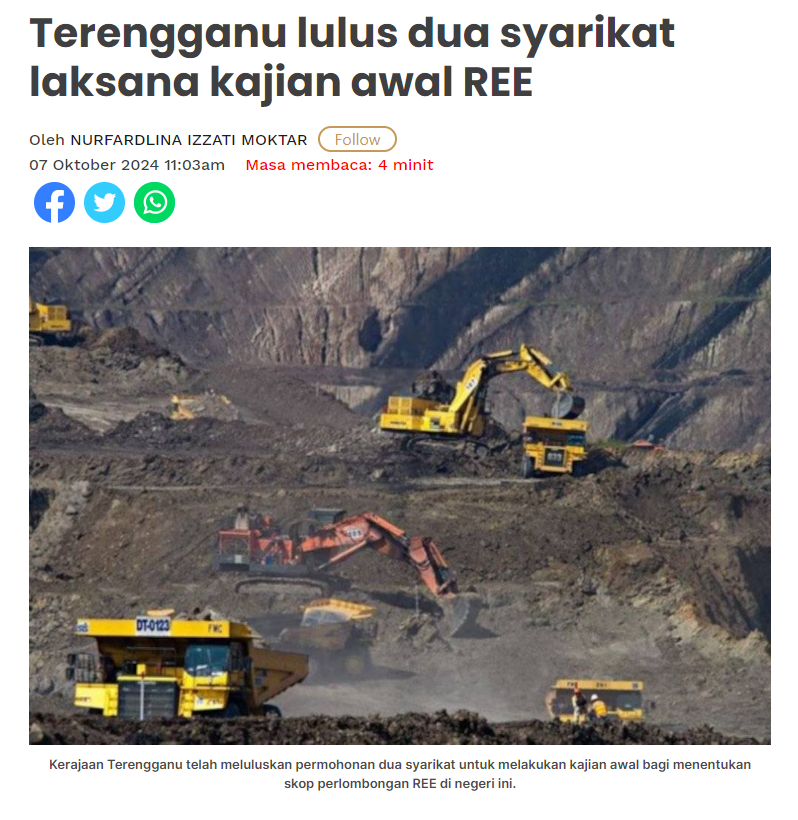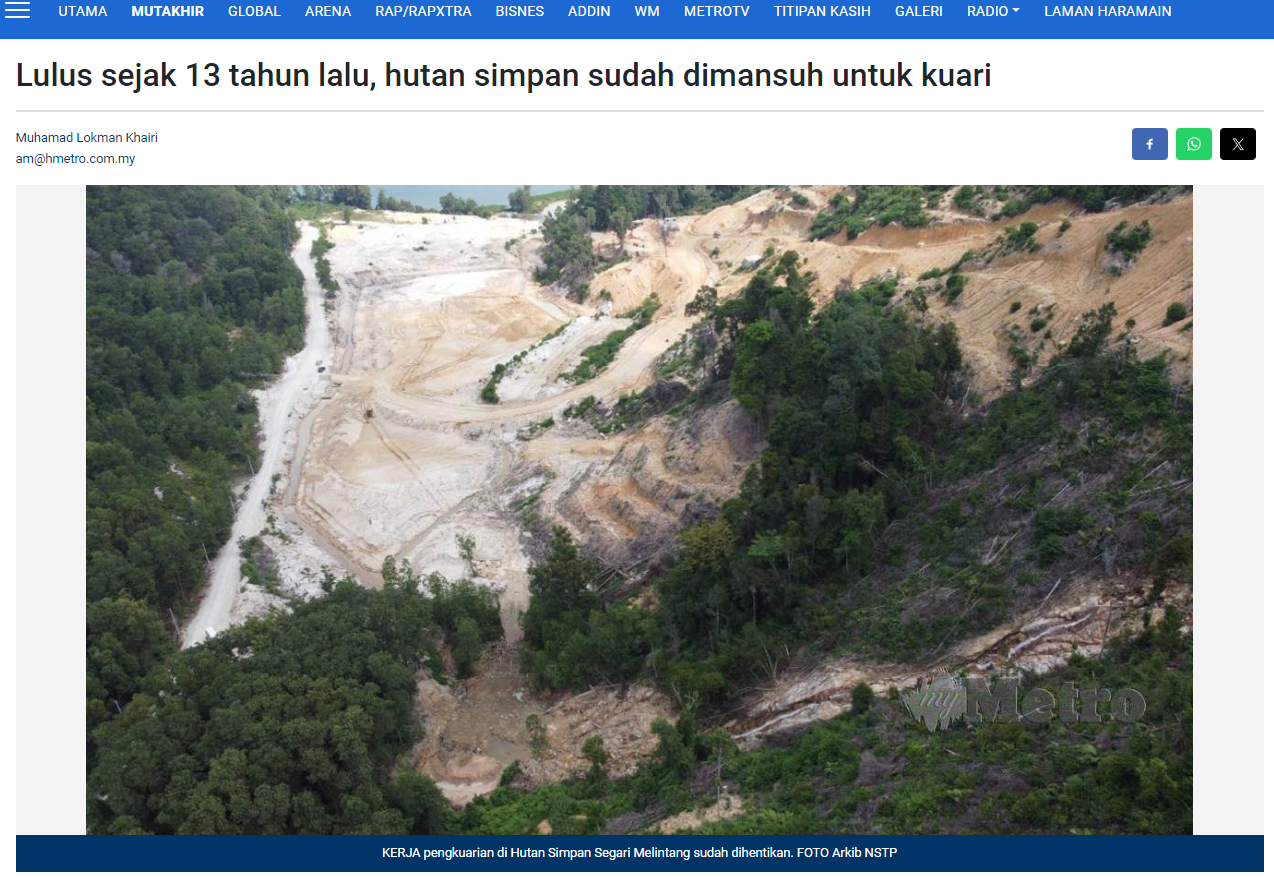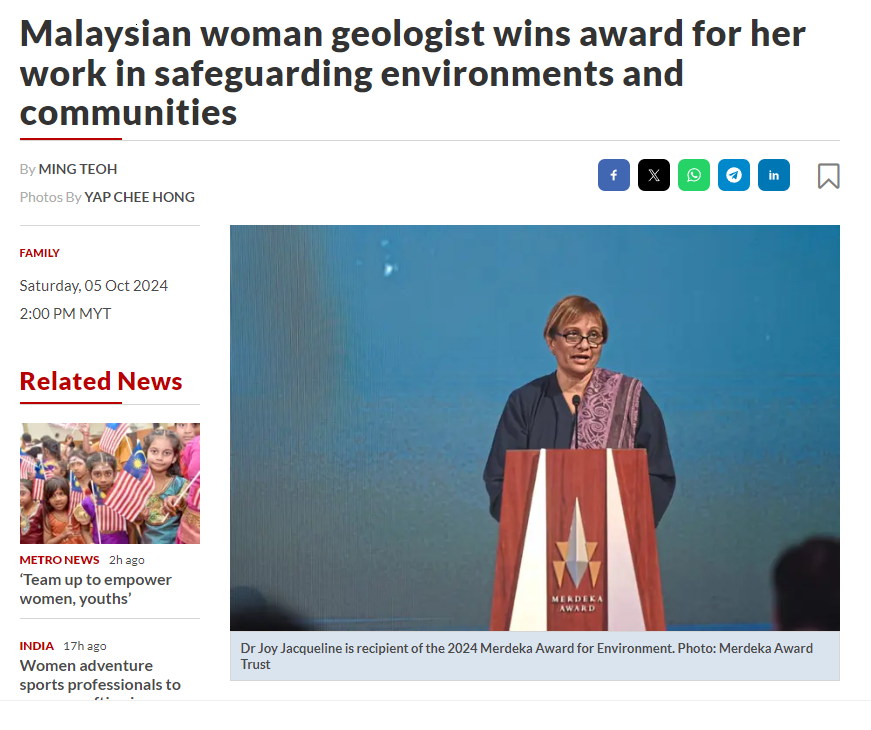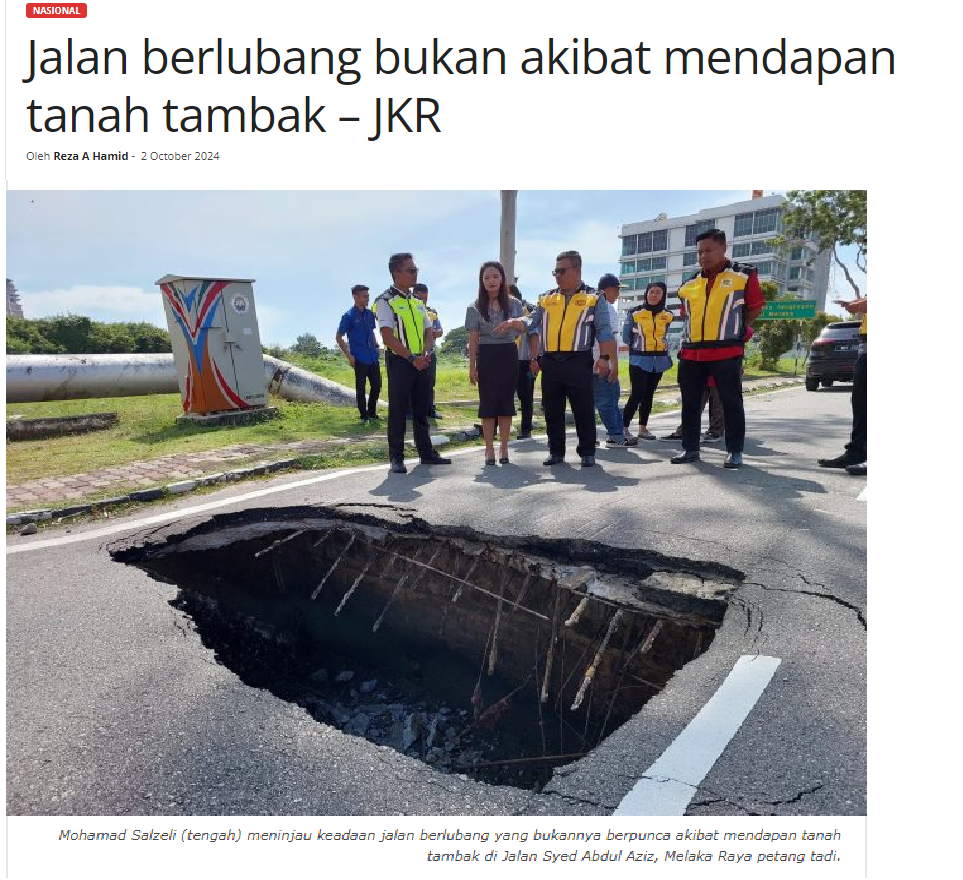Terdahulu, dua pertubuhan bukan kerajaan (NGO) berkaitan alam sekitar dilaporkan memohon kerajaan negeri mempertimbang semula keputusan penyahwartaan Hutan Simpan Segari Melintang.
Mengulas mengenai permintaan NGO itu, Teh berkata, kerajaan Perak mengambil maklum perkara itu sambil menegaskan, aktiviti pengkuarian yang sedang berjalan dan yang akan dilaksanakan tertakluk kepada pemakaian tenemen mineral serta undang-undang sedia ada.
"Antaranya adalah Pajakan Melombong mengikut kawalan Enakmen Mineral Perak (2003) dan akan diurus bersama dengan pemakaian Akta Pembangunan Mineral 1994, Akta Kualiti Alam Sekeliling 1974 serta Akta Perancangan Bandar dan Desa 1976.
"Ini bagi memastikan segala pelaksanaan aktiviti pengkuarian dapat dijalankan secara bertanggungjawab," katanya.
Beliau berkata, kerajaan negeri meluluskan beberapa cadangan penambahbaikan dengan memperkenalkan peraturan lebih ketat berkaitan pengurusan bahan mineral serta pengembangan sektor industri pertengahan dan industri hiliran.
"Mulai tahun ini, operasi di bawah tenemen mineral iaitu Pajakan Melombong yang baharu perlu mempunyai kelulusan Laporan Penilaian Kesan Kepada Alam Sekeliling (EIA), Laporan Enviromental Management Plan (EMP) dan Kajian Penilaian Impak Sosial (SIA).
"Selain itu, syarikat pengkuarian mesti mempunyai kelulusan Laporan Erosion Sediment Control Plan (ESCP), Surat Kelulusan Skim Pengendalian Melombong (SKSPM) dan Kebenaran Merancang (KM) tertakluk kepada kesesuaian dan keadaan semasa serta polisi semasa yang berkuatkuasa," katanya.
Tambah beliau lagi, kerajaan negeri akan menggantikan keluasan kawasan yang dinyahwarta itu dengan tanah kerajaan bagi dijadikan hutan simpan baru.











